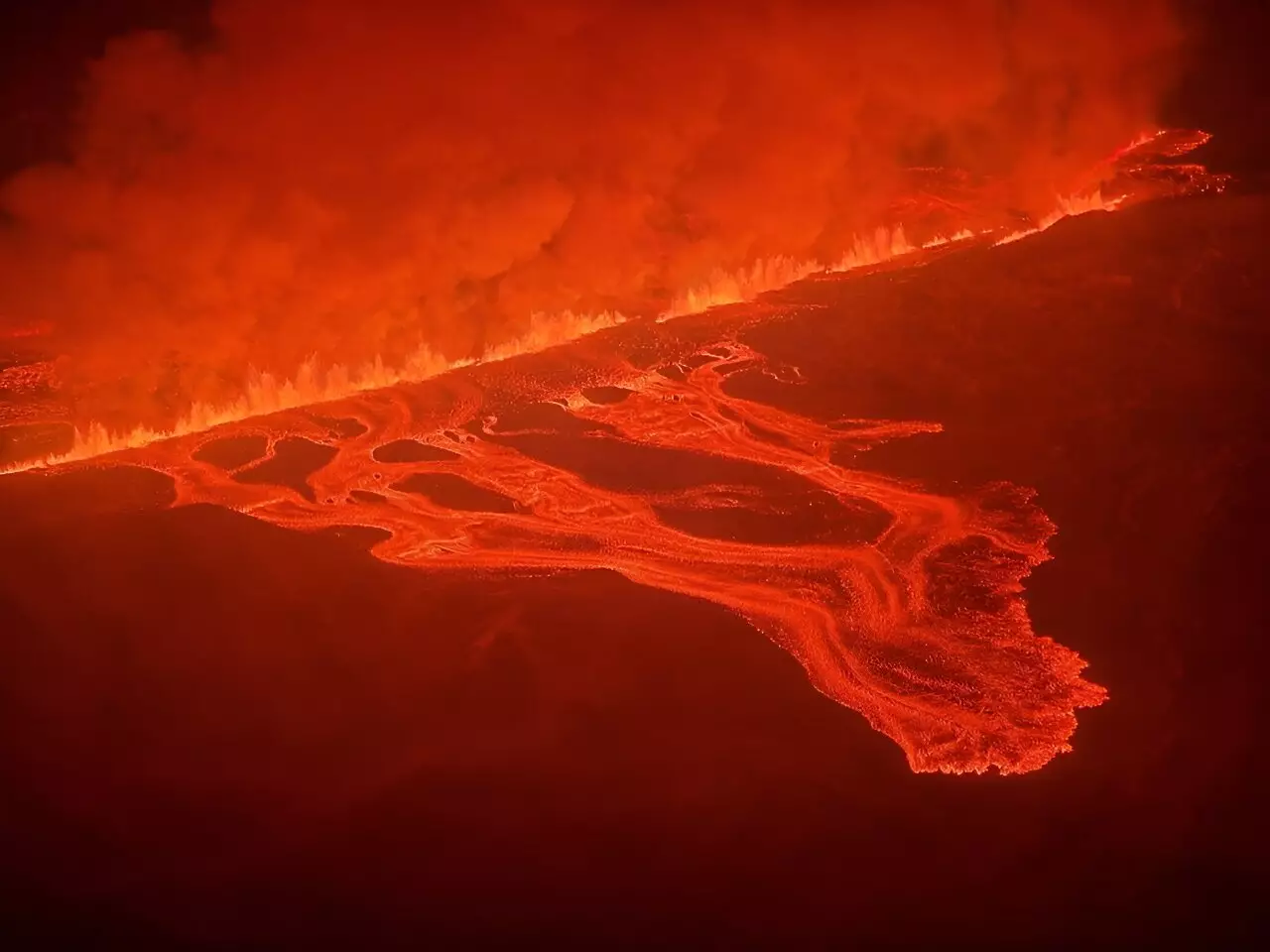In a stunning turn of events, a river of magma flowed beneath an Icelandic fishing village last year at an unprecedented rate, leaving scientists astounded and the region in chaos. With volcanic activity resurfacing after 800 dormant years, the western Reykjanes peninsula finds itself in a state of emergency once again. This article delves into the groundbreaking study that sheds light on this escalating volcanic activity, examining the implications and uncertainties that lie ahead.
Just as the latest volcanic fissure split the Earth’s surface near the abandoned village of Grindavik, a study was published in the journal Science, detailing the alarming findings. The research reveals that magma gushed upwards from a deep reservoir, traversing a long and narrow “vertical sheet” kilometers below Grindavik in a matter of hours. Lead study author, Freysteinn Sigmundsson, warns that this volcanic surge shows no signs of abating, leading to months of uncertainty in the vulnerable region.
The analysis indicates that the surging magma created an astonishing 15-kilometer long and four-kilometer high underground dyke. Despite its immense length and height, the dyke’s width remains only a few meters. Prior to the eruption, an estimated 6.5 million cubic meters of magma had accumulated below the Grindavik vicinity, a staggering volume. Notably, the magma flowed at a rate of 7,400 cubic meters per second, a level previously unseen in Iceland or elsewhere. To put this into perspective, the average flow of the Seine river in Paris is a mere 560 cubic meters per second, rendering this eruption of such monumental proportions.
This surge of magma underscores the alarming trend of escalating volcanic activity in the region. Comparing it to the recent eruptions on the Reykjanes peninsula from 2021 to 2023, Sigmundsson reveals that November’s magma flow was a staggering 100 times greater. The consequences of this heightened activity have been devastating, with increasing underground pressure causing hundreds of earthquakes and significant ground elevation. Grindavik and its surrounding areas have experienced repeated evacuations, raising concerns over the long-term viability of the region.
The Dangers Below
While the threat of lava looms large, the hidden crevasses beneath the town pose an even greater danger. The extensive network of cracks, borne out of the surging magma flow, has left infrastructure damaged and the town vulnerable. Sigmundsson emphasizes that these hidden crevasses pose a significant risk and need to be addressed promptly. The repeated evacuations and uncertainty have led to debates about the future sustainability of Grindavik and its surroundings.
Seismic measurements and satellite data have played a pivotal role in unraveling the driving forces behind this extraordinary magma flow. Iceland’s location on the Mid-Atlantic Ridge, which separates the Eurasian and North American tectonic plates, holds the key to understanding this phenomenon. As the plates have gradually moved apart over the centuries, building “tectonic stress,” the conditions for magma surges through the geological fault lines have intensified. The researchers hope that these insights will not only shed light on volcanic eruptions in Iceland but also inspire further research into eruptions worldwide.
The recent eruption and the extraordinary magnitude of magma flow beneath Grindavik have sent shockwaves through the scientific community. With the region experiencing volcanic activity after eight centuries of dormancy, authorities are grappling with the challenges posed by this ongoing eruption threat. The researchers’ study has shed light on the forces driving this unprecedented event and underscores the urgent need for preparedness. As the river of magma continues to surge, uncertainty looms, and the fate of Grindavik hangs in the balance.


Leave a Reply